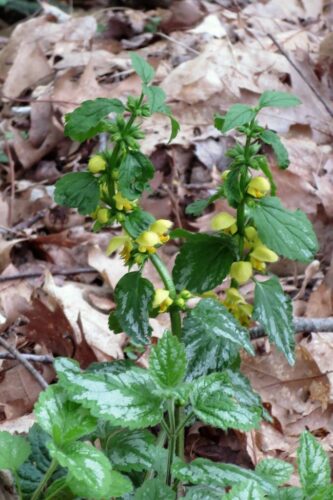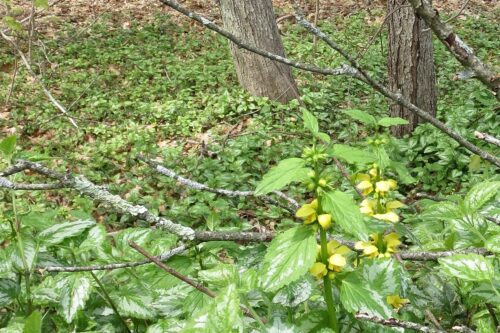We’re approaching the end of the year, and it’s a good time to clear out my blog drafts folder. There are several SITY posts waiting to be finished up and published. It may be the wrong time of year for them, but I feel like some flower pictures might perk things up around here. So, behold this yellow beauty:

This attractive plant species has been growing and spreading in the yard since before we moved here. My husband told me that our previous neighbor claimed to be the one who originally planted it (in his own yard–it had since migrated to ours). He didn’t give a name to it, though. I knew that my resources for identifying wildflowers wouldn’t be of any use in this case, so I didn’t bother trying to identify the plant at first. We simply referred to it as “the yellow flower growing next to the driveway.”
But, as the years passed, I became more and more curious about this mystery plant, because it was spreading so aggressively. I looked it up online, and it was surprisingly easy to identify. Its name is yellow archangel, and it has been declared a noxious weed in some places, notably Washington State, where it has become invasive. Still, there are a lot of people who think it’s a great plant. Half the Internet wants to sell yellow archangel to you as ground cover, and the other half is warning you not to plant it.
My opinion is similarly divided. I can see that it’s behaving like an invasive here, and that worries me a little. But it’s not, to us, unwelcome in the place where it’s growing. It’s doing exactly what the neighbor probably intended for it to do, which is to provide attractive ground cover in a shaded area. And frankly, it has already spread to the point that eradicating it would be very difficult. I mean, look at this:

Trying to Take over the World
I think that yellow archangel is here to stay. Even if I were inclined to remove it, pulling it by hand is said to be ineffective, and that is the only method I’d feel comfortable using. But I am tempted to call it by one of its alternative common names–yellow weasel-snout–because that’s a delightfully silly-sounding name but also slightly sinister, as befits a plant that’s trying to take over the world.
